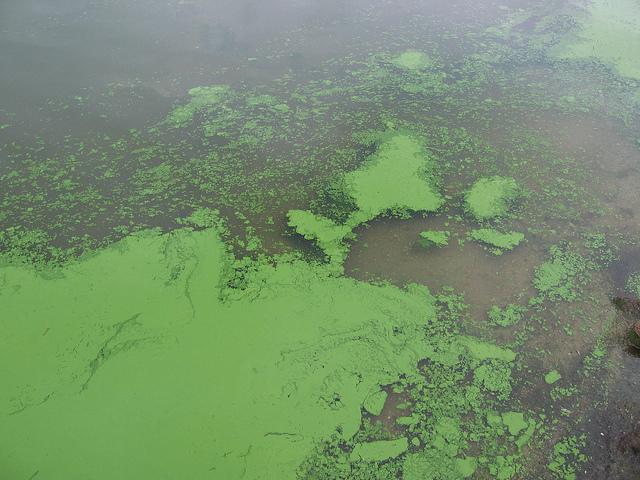Local volunteers help detect cyanobacteria in Lake Champlain

You’ve got your goggles on, you’re slicked up with sunscreen, your water shoes are firmly in place, you’re about to jump in the lake—and there it is: foamy pea soup, right on the top of the water. Though you might be tempted to take the leap anyway, it’s best to take a step back. Cyanobacteria blooms aren’t just any normal lake growth, and they can make people and animals really sick. Here in Charlotte, working through the Lake Champlain Committee (LCC), volunteers are testing the water so you can jump in without fear.
The LCC is a nonprofit organization that works in New York and Vermont to make the lake clean and accessible. One of their programs is the citizen-powered LCC Cyanobacteria Monitoring Program (LCCCMP), which, thanks to local volunteers statewide, monitors and reports levels of cyanobacteria in the water. Sandi Detwiler of Charlotte is one of those volunteers.
She said she got involved with the LCCCMP when a friend couldn’t continue her stint as a water tester, and she spent the next summer training to collect water samples from various lakeshore spots around Charlotte. “My interest in the lake and water health comes from being a summer resident on Flat Rock,” she said. “We sail, paddle and swim on this beautiful lake and treasure it as a resource for all Vermonters and visitors.”
Cyanobacteria, also known as blue-green algae, aren’t actually algae at all. They are bacteria that bloom through photosynthesis and thrive when conditions in the water are rich in nutrients. When cyanobacteria die, most frequently in late summer and fall, they release toxins into the water that can be harmful to people and animals.
The LCC web site clarifies the health issues associated with cyanobacteria: “Compounds produced by the cyanobacteria can trigger skin irritations and gastro-intestinal illness. Toxins in aerosols may cause itching and irritation of eyes, nose, or throat. Some species produce toxins that affect the liver, while other species’ compounds affect the nervous system. Cyanobacteria toxins are also suspected carcinogens.” Children and dogs are especially vulnerable.
Volunteers from the LCC test and observe cyanobacteria levels at least weekly, and their findings are reported to the Vermont Department of Health, which maintains an online tracker so it’s easy for people to check the cyanobacteria levels in the lake before they head out. The database is available on the Vermont Department of Health website.
For daily, up-to-date information, lake users who do not see cyanobacteria in the water yet are still concerned can call the state Department of Health for more information.
Five spots in Charlotte are regularly monitored: Whiskey Bay, the Charlotte Beach, Town Farm Bay, Lane’s Lane Landing and North Shore Road. One of three potential ratings is given to each site: generally safe, low alert and high alert. During July and August, only one location had a rating other than generally safe. On July 20, North Shore Road showed low alert levels of cyanobacteria in the water.
Though Lake Champlain regularly has high levels of cyanobacteria, those levels are usually farther north, according to the Vermont Department of Health.
Detwiler said that as an avid recreational lake user she is committed to Lake Champlain’s health. “I will continue as a volunteer for the Lake Champlain Committee for as long as I’m here,” she said. “They are doing invaluable work and need all our help.” She also said that despite her knowledge of the potential dangers of cyanobacteria, she “happily” swims in the lake and that she has learned a valuable lesson from her volunteer work. “I’ve learned that we cannot take our resources for granted.”

